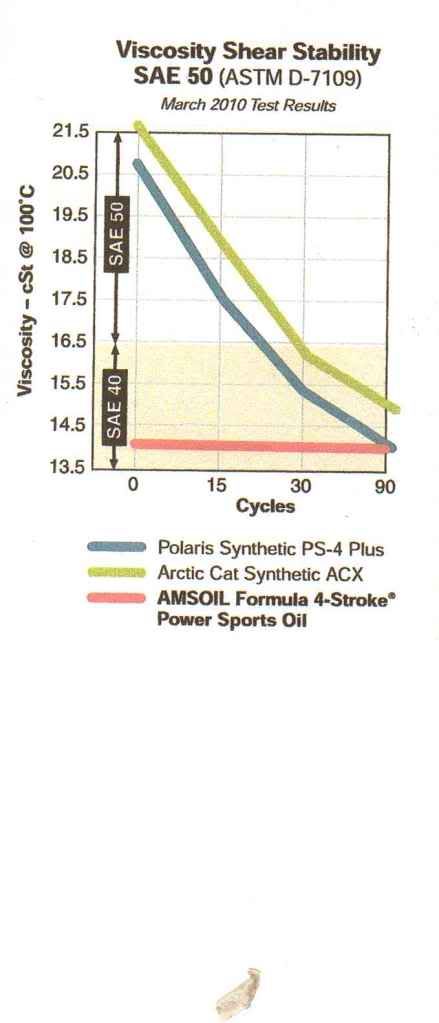greasemonkeyok
Veteran Member
but for how long will it stay a 50, not long at all.....
That depends on what the horizontal "cycles" measurement represents. The advertisement is meaningless unless that variable is defined.
but for how long will it stay a 50, not long at all.....
but for how long will it stay a 50, not long at all.....

What the **** is that ??
No real meaningful testing lab would ever make a fat lined graph like that. And why is one company listed in bold and not the others.
B.S. ALERT!
I'm not sure now if it's just the comical amsoil salesmen littering the net now...
It's a funny thing. I actually feel myself becoming ever more determined to never buy an amsoil product with every passing poser post I read. It's probably the exact opposite of what the amsoil salespeople are trying to accomplish.
So, all that said, it is really just a matter of 20w vs 30w oil that is the issue.
The first number is the weight of the Base Oil. So in a 15w50 oil, the base oil is 15w. Then they add thickeners that when the oil heats up, it has the same properties as a 50w oil. The bigger the spread in the numbers, the more the oil relies on the thickeners to perform at a 50w level. In other words, a 0w40 oil relies more on thickeners that a 10w30.
If you are in a really hot area where there is no benefit to the lower first number, my vote would be to use the higher first number.
This is correct with dino oils only. Synthetic oils use a base equivalent to the 100c rating yet flow as well as the low number when cold. For example, a 10w30 synthetic is a base 30 oil that flows as well as a dino 10w when cold. Full synthetics do not use viscosity index improver's because they are already a 30w base. This also prevents the oil from shearing down to a 20w as the vi improver's break down thus allowing for much longer change out intervals.
The main use of ZDDP is in anti-wear additives to lubricants such as greases, gear oils, and motor oils, which often contain less than 1% of this additive. It has been reported that zinc and phosphorus emissions may damage catalytic converters and standard formulations of lubricating oils for gasoline engines now have reduced amounts of the additive, though diesel engine oils remain at higher levels.[3] Crankcase oils with reduced ZDDP have been cited as causing damage to, or failure of, classic/collector car flat tappet camshafts and lifters which undergo very high boundary layer pressures and/or shear forces at their contact faces, and in other regions such as big-end/main bearings, and piston rings and pins. Roller camshafts are more commonly used to reduce camshaft lobe friction in modern engines. There are additives, such as STP(R) Oil Treatment, and some racing oils such as Valvoline VR-1,[4] are available in the retail market with the necessary amount of ZDDP for engines using increased valve spring pressures. See "external links" in this article. The same ZDDP compounds serve also as corrosion inhibitors and antioxidants.